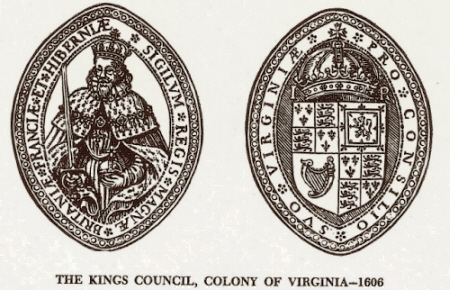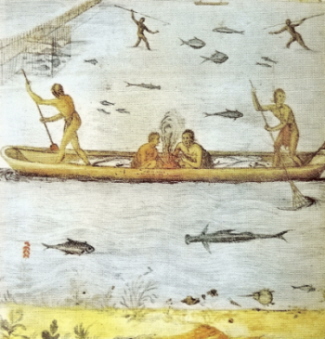

Early Virginian Colonies: 400 Years Later
The first English Colonies in the Tidewater area of the present state of Virginia were named after Elizabeth I, "the Virgin Queen." The Virginian colony consisted of non-Puritan Anglicans, whereas the Massachusetts Bay colonists were more Puritans seeking religious freedom. They came later, but they were more skilled than the Virginia gentry, and adventurers who were more accustomed to idleness. To quote John Smith:
"They never know what day to day work is - with the exception of the Dutch, the Poles, and maybe a half dozen others."
This was a time right before and during the famed Spanish Armada. Elizabeth I wanted more trade routes to bring new imports to England and to make colonies run by her court favorites. Remember her father Henry VIII had basically taken all he could from the Catholic Churches during the Reformation Era. He had emptied the State coffers as he gave land and castles to his loyal followers. After his death, the kingdom was greatly lacking in funds. The only way England could recover was to start colonial plantations to serve England. They campaigned saying the Spanish were brutal, thus the Indians of Virginia would welcome England as their liberator. Colonists were told not to allow the Indians to see any English die, lest the Indians learn that they were common men, rather than "immortals." Apparently, they thought they would react like they did to Cortez in Mexico. There the Mexican Natives thought Cortez fullfilled their prophesy about the return of Quetzalcoatl, their winged serpent god. That ended in disaster, as the Aztecs were slaughtered in Tenochtitlan. The English did not know that trade routes among all the Native Americans brought news from Mexico. Various tribes used their canoes to travel down the east coast, by remaining close to land, and could therefore make it to the Gulf of Mexico. The Mayans told them of the things that happened under the Spanish conquistadors. However, in this case they were searching for gold. The Powhatans did not have gold. However, some of the colonists had dreams of finding gold in spite. In fact that was one of their main motivations, to search for precious minerals. They never found gold in Virginia.
FOREST PRODUCTS:
The Powhatans had bows made of maple and witch hazel. The bow and arrow were their only weapons against British firearms. Unless they used the element of surprise. Cedar was used for boxes, bed steads, lutes, and virginals by the British. American wood replenished the British people's exhausted woodworking supplies. They came to a "land of plenty," and did not look to the future. Thus they wasted materials thinking there would be no end to these supplies. In the Iroquois and other Native tribes they never made decisions until they were weighed heavily. The Iroquois made decisions based on what effect their acts would have on seven generations down the line. They seem to have looked more to the future. Unfortunately, we see this same attitude in the Bush administration, where natural resources are taken no matter what the consequences.
The Powhatans wore cloaks, mantles, and aprons of deerskin. The British liked deerskin gloves, shoes, and jackets. This was a commodity they wanted for trade. Unfortunately the English wanted more and more deerskins, which eventually depleted the Native
American's game. This caused the Natives to begin to hunt on each others lands and to steal hides from each other to earn trinkets (beads, copper, pots and pans, etc), they wanted from the British.
Written and Researched by Margaret Odrowaz-Sypniewski, B.F.A.

The Powhatan's diet consisted of mussels, fish, crabs, and oysters, from the sea; and deer, squirrels, raccoons, rabbits, oppossums, and beavers, from the woods. Their staple crop was corn, beans, and squash ("the three sisters"). Their diet was much the same as that of the Natives near the earlier Roanoke Colony.
The painting above is by Roanoke Governor John White, gentleman, artist, and friend of Sir Walter Raleigh's. The watercolor depicts the Natives fishing from their canoes. John White was born between 1540 and 1550. In 1590, when John White returned from England, John's daughter, Eleanor (White) Dare, his son-in-law, Annanias Dare, and grand-daughter Virginia Dare were all lost to him. They were part of the failed Roanoke Colony. Virginia was the first child born in Roanoke. It is thought that John White originally made these pictures as sketches, then they were made into watercolor paintings, so he could feel closer to his family. All of his life, he was haunted by their disappearance. White had many regrets, and died without knowing if they were dead or alive. He wondered what would have happened if he had not ordered the return of their ship to England for supplies. The only marking was a sign saying "Croatan." Croatan was an island with friendly Indians, but White did not know that the earlier colonists had caused troubles and that they went back to England, right before his family arrived. In anger, some of the men had raided the camp of the natives and burned all their crops and village. By a turn of fate, it was the friendly Indians that were punished not the unfriendly ones. The colonist's fate is still a mystery today. However, there are various Indians tribes who claim to have given them shelter. There is not conclusive proof, only DNA testing could give us that.
Below are some articles about these colonies and the impressions made on the English, Poles, and Spanish. Enjoy!
The colonists soon showed the Powhatans that they were not "immortal." They died in droves from hunger and disease. Out of the first 104, 38 people were alive six months later. Things were so bad that some turned to cannibalism. One starving man killed and ate his wife/or maybe she died of starvation and then ate her? No one knows for sure. He was tried in the courts, convicted, and burned at the stake. Burning people at the stake, was a favorite punishment that was used before and after in the witchcraft frenzy in Scotland and Europe, and in the Massachusetts colonies they hanged their "Witches." The hub of witchraft was in Salem, Massachusetts, and the Salem Witch Trials are still a hot subject of controversy, even today.
Between 1607-1622, some 10,000 people were brought to the Virginian colony. By 1622, only 20 percent were still alive. The colonists had no work ethic, and didn't even raise their own corn to feed themselves. They forgot to tend the growing corn by eliminating weeds and watering them. The Natives grew corn, squash and beans together. These crops complimented each other by providing each other nutrients and shade was made by the squash which kept moisture in for a longer period of days.
Instead of working, the upper-class preferred to bowl in the streets. The upper classes (the higher percentage of the people at first) expected the Natives to feed them like their servants did in England. They had no understanding of famines and droughts, they only wanted food, even at the expense of the locals. When the Native American Indians refused to feed them, since they barely had enough food of their own, the foolish colonists burned their homes and fields of corn, squash, and beans. You don't want to know how the Powhatans reacted. They thought the English utter and complete fools.
Sources:
"Pocahontas legend is being challenged," by Steve Szkotak of the Detroit Free Press. Sunday, March 11, 2007.
Roundtree, Helen C. Pocahontas, Powhatan, and Opechancanough: Three Indian Lives changed by Jamestown. Charlotteville: University of Virginia Press, 2005.
See "My Bibliography Pages" for other sources.
Of course this year marks the 400th Anniversary of the founding of Jamestown. Here are some links regarding this celebration:
JAMESTOWN 2007 - 400 Year Events:
There is a Pocahontas exhibit through June 24, 2006 at:
The Virginia Historical Society
Click Here to see their web site.
The museum is open from 10 a.m - 5 p.m. Monday - Saturday and from 1 p.m. - 5. p.m. on Sundays.
Admission:
Adults = $5.00. Seniors = $4.00 Students and Children = $3.00.
Table of Contents:
428 N. Boulevard
Richmond, Virginia
Jamestown 2007 - American's 400th Year
All these celebrations are meant to glorify the English, and all others (Powhatans, Germans, Swiss, and Poles) are called "ethnics." Not much has changed in 400 years! The Native American Indians have now mostly refused to be a part of this celebration, since they are still thought of as the "savages" whose oral history is not worth considering. They have a book regarding their side called The True Story of Pocahontas: The Other Side of History. by Dr. Linwood "Little Bear" Custalow and Angela L. Daniel "Silver Star." Golden, Colorado: Fulcrum Publishing, 2007. If you want to hear the other side, get this book. I have my copy! Order from Fulcrum Books <----Click Here, and when you get to their website click on "Native American" on the left column.
In place of Elizabeth I, we now will have Elizabeth II. She will visit the proceedings in May. Great Britain is having their own celebrations as well. This whole event has raised the hackles of many other "ethnics" as they are called by the Jamestown committee. The Poles are given no credit, because the only two books that mentioned their lifestyle was by Arthur L. Waldo and Zbigniew Stefanski and they are now considered to be "bogus."
